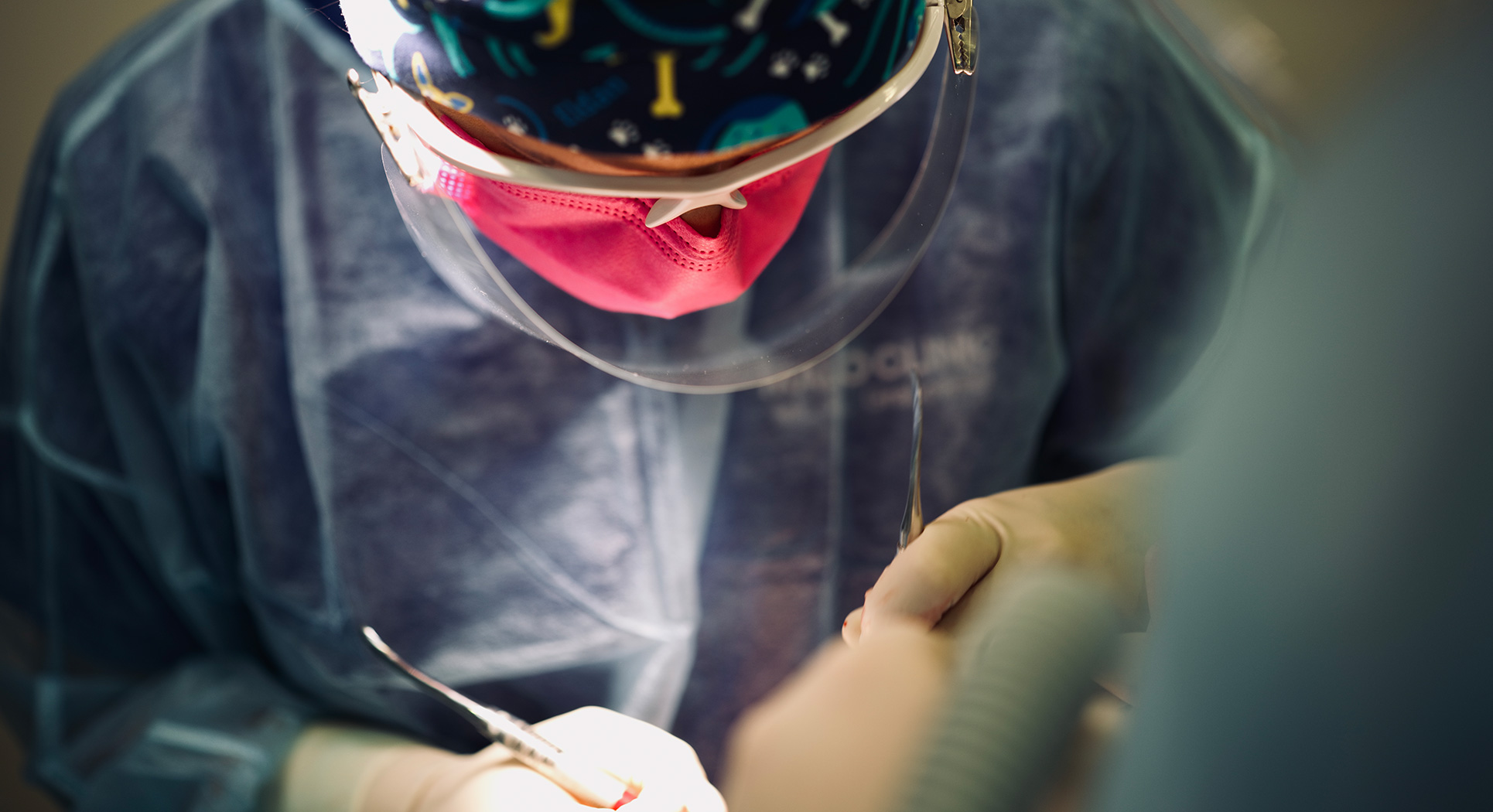Dental surgery

Dental surgery is a field focused on the prevention, diagnosis, and treatment of disorders, diseases, and pathological changes within the oral cavity and its adjacent structures.
A dental surgeon typically performs tooth extractions, including partially or fully impacted teeth, removes concerning lesions on the mucous membrane, sending them for further histopathological and oncological diagnostics, and carries out procedures such as root resection, hemisection, radectomy, alveolar ridge plastic surgery, augmentation of bone defects, and soft tissue corrections.
More complex clinical cases require coordination between dental surgeons and specialists in maxillofacial surgery, implantology, orthodontics, prosthodontics, endodontics, and periodontology. In such cases, MALO CLINIC doctors develop a multidisciplinary treatment plan aimed at achieving the patient's health, comfort, and aesthetics.
Surgical procedures are usually performed under local anesthesia, with the option to combine anesthesia with medications that help calm the patient while maintaining full consciousness.
All dental surgery procedures require radiological diagnostics. At MALO CLINIC, we have a digital panoramic X-ray machine and a dental CT scanner, allowing for a complete analysis of the patient’s condition and precise planning of the surgical procedure.
Main Tasks
- Extractions
A tooth may need to be removed for various reasons, including extensive decay, resorption, vertical root fracture, non-healing or recurrent periapical lesions, or the need to create additional space in the dental arch for orthodontic treatment.
- Surgical extraction of impacted teeth
Impacted teeth are those that have not fully erupted or have only partially emerged. This condition can occur for several reasons, with the most common being a lack of sufficient space in the dental arch. If these teeth are not removed, continuous pressure can lead to complications such as damage to neighboring teeth, inflammation, pain, or crowding. This issue most often affects wisdom teeth, which are the last to emerge, but in some cases, the body may develop extra (supernumerary) teeth for which there is no space in the arch.
- Treatment of oral infections
Oral infections are caused by microorganisms such as viruses, fungi, and bacteria. Some infections progress mildly and chronically, requiring appropriate pharmacological treatment. However, more severe or rapidly developing infections may require immediate surgical intervention, such as the incision and drainage of an odontogenic abscess.
- Eliminating sources of infection, removing cysts and tumors
The removal of cysts and tumors is also part of dental surgery. Cysts may develop due to unerupted teeth (follicular cysts), around the root tip (periapical cysts), or as retention cysts, such as those of the sublingual salivary gland. Every dentist, especially a surgeon, must maintain oncological vigilance. Any non-healing lesions, ulcers, or hypertrophic formations should undergo thorough diagnostics.
- Treatment of dental and skeletal deformities
Maxillofacial surgery deals with the treatment of craniofacial deformities (orthognathic surgery). In cases of skeletal abnormalities, in combination with orthodontic treatment, procedures aim to establish proper relationships between the upper and lower jaw.
- Diagnosis and treatment of salivary gland pathologies
Dysfunction of the salivary glands can manifest as dry mouth (xerostomia), leading to difficulties in eating, speaking, increased tooth decay, and discomfort. The causes vary, including infections caused by bacteria and viruses, mechanical obstructions (salivary duct stones, salivary gland tumors), systemic diseases (such as Sjögren’s syndrome, AIDS, lupus, diabetes), hormonal changes, or medication side effects. Diagnosis of salivary gland disorders often involves radiographic imaging (traditional X-ray or CT scan), saliva flow analysis, and laboratory tests.
- Treatment of temporomandibular joint (TMJ) dysfunction
The temporomandibular joint, located near the ear, connects the jaw to the skull. TMJ dysfunctions are often related to misalignment between the upper and lower teeth, leading to abnormal muscle, ligament, and joint function. Key symptoms include headaches, ear, eye, facial, and neck pain, as well as difficulties in chewing and clicking or popping sounds when opening or closing the mouth. Treatment focuses on eliminating the underlying causes of these problems. It is often linked to orthodontic and/or prosthetic treatment and may require implantology or orthognathic surgery interventions.
